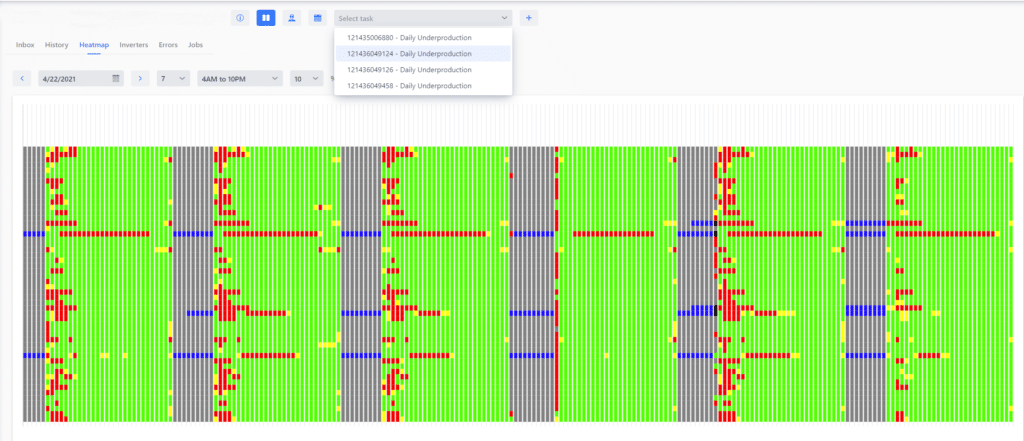One of the strengths of our Solar Workbench software is that it is finely tuned to detect faults and anticipate disruptions. Our team of data analysts is constantly assessing new ways to do this, using artificial intelligence and machine learning.
I mean, we’re talking some serious skills here – PhDs in math and black hole theory? Yeah, that’s right. I’m sticking with words, thanks.
Last year, about this time, one of our sites posed a challenge that we were able to problem-solve, and at very little cost to the site’s owner.
Here’s what happened:
The inverters at this particular site were consistently underperforming. We knew from the SolarEdge documents that their inverters operate fully up to 50C; that’s their temperature limit (after that, the output current begins to decrease).
When we investigated, we found the temperature was close to 80C – much higher than the allowed temperature – which meant the inverter, immediately and significantly, reduced production as a precaution.
So, what’s the problem with that?
As mentioned above, SolarEdge inverters have a temperature limit of 50C. If an inverter goes higher than that temperature, then the voltage decreases, which means the inverters are at risk of under-producing. However, different inverter times and models will have different maximum temperature ranges. Currently, at this customer’s request, our system records when an inverter gets above 80C; if the temperature is above 80 degrees for a full sunlight hour, the system raises an automatic fault for the monitor – a real human – to investigate.
Typically, if it is a new problem or a new error, the monitor will report it but close the investigation, as the temperature increase can sometimes happen on hot days. However, when it happens consistently and recurs, it is sending a message that there is a hardware issue, and a tech will need to be sent out to fix it.
So, what’s the solution?
Most inverters have a cooling fan inside to regulate the temperature. If the inverter consistently overheats, it is likely the fan needs to be replaced.
We checked the fan.
A simple, $10 fix to an issue that cost $2,000/year in lost efficiency. Over the remaining lifetime of that system, that’s a savings of about $30,000.

